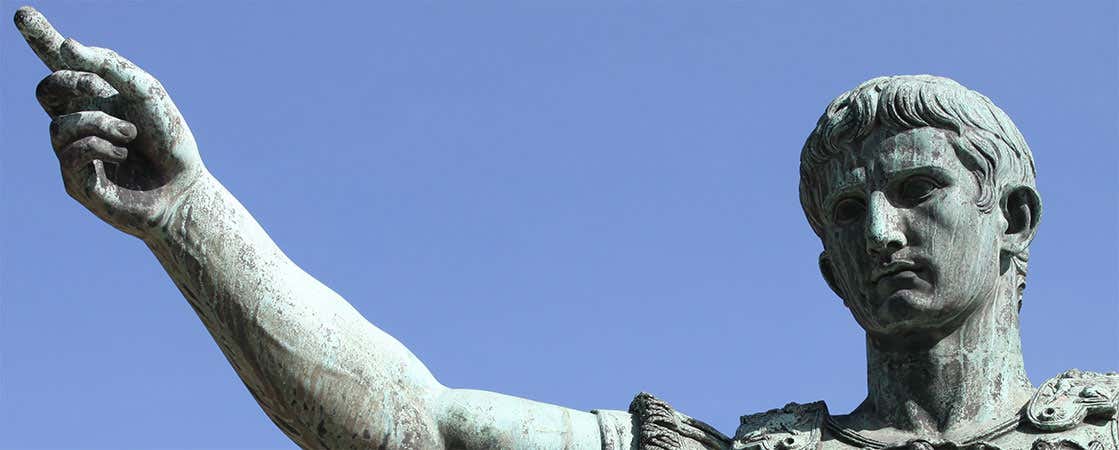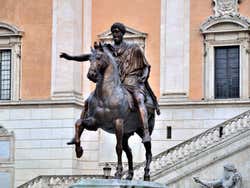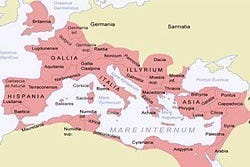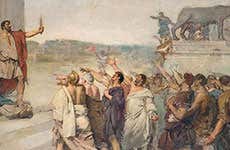
Roman Empire (27 BC - 476 AD)
The Roman Empire was founded when Augustus Caesar proclaimed himself the first emperor of Rome in 31 BC and came to an end with the fall of Constantinople in 1453.
An empire is a political system in which a group of people are ruled by a single individual, an emperor or empress. The Roman Empire began with the reign of Emperor Augustus. The power of the Senate was limited and became an organ to support the emperor.
The period between Augustus and Diocletian is called the High Empire, while the Low Empire is the era between Diocletian and the fall of the Roman Empire in the West.
The High Empire (31 BC - 305 AD)
Between the years 14 and 68 the heirs of Augustus succeeded him: Tiberius, Caligula, Claudius and Nero. This dynastic succession was interrupted when emperor Nero died and a civil war broke out in the year 68. Three emperors fought for power and finally, the war was won by Vespasian, part of the Flavian dynasty.
The Flavian dynasty was succeeded by the Antonines (96 – 193), a generic name given to Nerva, Trajan, Hadrian, Antoninus Pius, Marcus Aurelius and Commodus. These emperors had a very similar policy to the Flavians.
The accession of Septimius Severus (197 - 235) made him the first of the Imperial Severan Dynasty to rule (197 - 235). He was replaced by Caracalla, Macrinus, Elagabalus and Alexander Severus.
The absolute power of Rome, the capital of the Empire, was weakened over time. Between 235 and 300 Rome’s only priority was to defend its borders from the continuous attacks by the Barbarians and from the Sasanians (from Persia). The pressure of these raids prompted the army to assume power in 235. This era is known as the military anarchy and lasted about 50 years. The emperors of this time had one sole purpose: fighting the Empire’s enemies and securing the borders.
As a consequence of these constant wars, the army was very expensive to maintain, and thus the Empire became crippled with debts. This in turn impoverished the population and many lost their identity and values. Many were put in doubt of their religious beliefs, especially with the arrival of new doctrines from the East.
The persecution of an ever-growing Christian minority by Diocletian was a way to rid the empire of the dangers it was facing.
In 284 a military revolt saved the Empire and Diocletian was proclaimed emperor. During his rule he instaured the Tetrarchy, a form of government that divided the power. Diocletian designated the general Maximian to take charge of the western regions of the Empire, while the emperor governed over the eastern regions. Years later, he would appoint two Caesars.
Diocletian abdicated in 305, revealing that the Tetrarchic political system didn’t work without someone to lead it.
The Low Empire (305 AD - 476 AD)
After the abdication of Diocletian in 305, a series of conflicts took place until 312, when Constantine became the sole emperor of the West. He was to be the last emperor of the unified empire. He instituted Christianity as the official religion of the Empire.
The capital of the Empire is moved to the ancient city of Byzantium, which is reconstructed. Byzantium, from November 8th, 324, was renamed Constantinople or the city of Constantine.
Constantine’s successor, Theodosius, divided the empire between his two sons Arcadius and Honorius, creating the Western Roman Empire and the Eastern Roman Empire.
The Western Roman Empire fell in 476. Meanwhile, the other half, called the Byzantine Empire, survived until 1453 with the decline of Constantinople, now called Istanbul.



